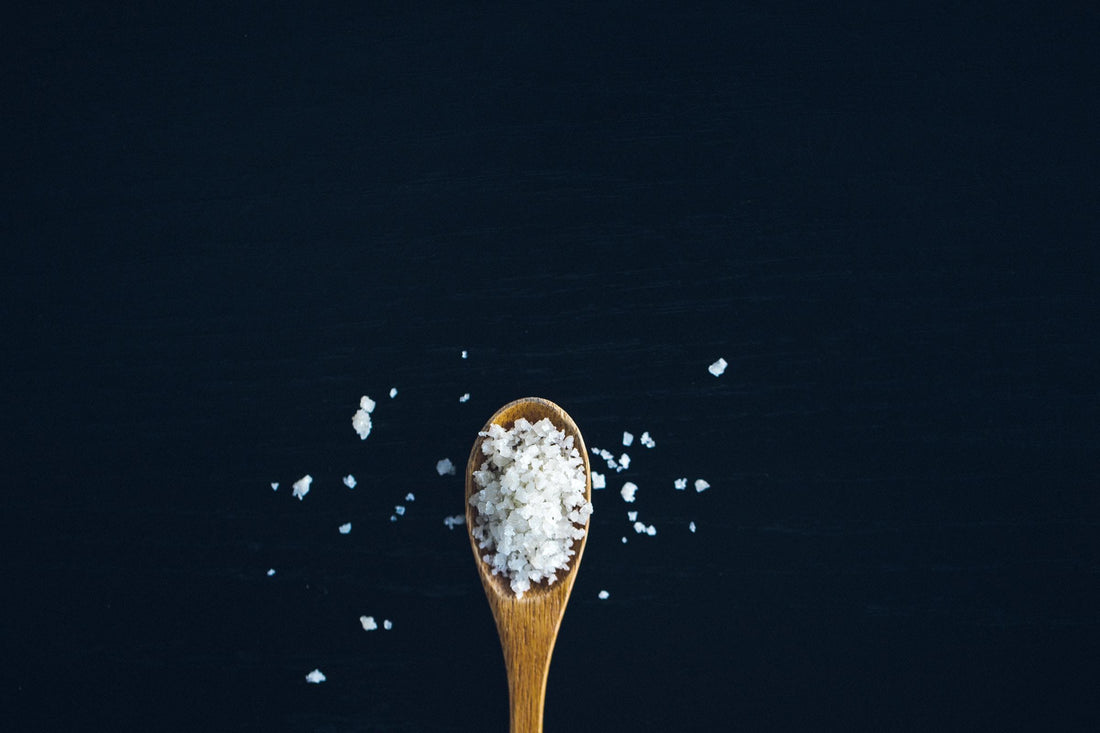
Salt is probably the most important ingredient in your kitchen. Too little of it and your food’s going to be bland and forgettable, too much and it can be overpowering, dehydrating, even inedible. But just the right amount? That’s culinary perfection.
However, there are so many types of salt, it can be hard to know where to start. But fret no more. Just get yourself a good quality salt and pepper set and read on to find out all about the different types of salt and how to use them.
What are the different types of salt?
We’ll get into more detail below, but the main salts we’re going to be talking about are Table, Himalayan, Fleur de Sel, Sea, Kosher, Flake & Celtic Grey. They come in different shapes and sizes, some are fine, some are coarse. And they come in different colors too. There’s white salt, obviously. But did you know it can be pink, grey, red, even black?
Why? We’re going to get into that below.
Himalayan Salt
This salt gets its rosy hue from trace minerals like magnesium, potassium and calcium and is the purest form of salt you can get. In fact, it contains all 84 minerals found in our bodies and is used for all sorts of things, like bath salts and salt lamps.

But, back to the kitchen. We’d recommend using it mainly to finish dishes as it can be pretty pricey. That’s because it’s so pure and you can only get it from -you guessed it- the Himalayas in the Punjab region of Pakistan. Got money to spare? Well, it clings particularly well to meat when pre-seasoning.
Table Salt
This is your basic, finely ground salt that you’ll find in standard salt shakers at restaurants and cafes worldwide.
An anti-caking ingredient is often added to stop it clumping up and this can make the salt go quite bitter if it’s used in large quantities. It’s still a great option and will bring out the flavors of your food, but if possible, avoid using it for seasoning whole, savoury dishes. Instead, save it for salting pasta water, or sprinkling on chips. It’s also a chefs’ favourite for baking as its fineness almost guarantees it will dissolve into batter.
Fleur de Sel
Fleur de sel or ‘Flower of Salt’ is harvested directly from evaporated sea water in Brittany, which gives it a particularly sea-like taste and smell.
This subtle flavor is best applied to finish a meal off rather than seasoning before and during cooking. That’s why it’s known as a ‘finishing salt’ (add that one to your seasoning dictionary). This is also because high heats will simply melt it away, taking its flavor with it.
Even if you did want to cook with it, it won’t come cheap. It’s one of the priciest salts on the market.
Sea Salt
All salt is technically sea salt. But here, we mean a specific type. Harvested similarly to Fleur de sel, it can vary hugely in flavor and levels of ‘saltiness’, depending where it’s from, amongst other things. So always taste before you start seasoning.
Sea salt can be used as a finishing salt or cooking salt and we’d recommend using the larger flaked variety to finish off meals and the finer stuff to season as you go. All salt mills worth their, well, salt, will be adjustable, so you shouldn’t need to keep two different types in the kitchen.
Kosher Salt
If you’re going to go with just one salt, Kosher salt is it. It’s fairly affordable. It’s resilient to heat. Its coarseness means it’s quite hard to over salt a dish but it’s also light so it dissolves easily into dishes. It’ll go easily into any salt mill. Plus, It’s got less additives than table salt, which makes it perfect for sweet or savory dishes.
One thing to note is just how light Kosher salt is. If a recipe calls for a tablespoon of table or sea salt, you’ll need to use a little more.
Flake Salt
From the same family as sea salt and Fleur de sel, flake salt is also harvested from evaporated sea water. But its sharp, pyramid shape, briny flavor and coarse texture really separates it from its siblings.

This combination has made it surprisingly popular with dessert chefs and you’ll often find it sprinkled on chocolate cookies or caramel tarts.
Most flake salt is able to survive the harsh heat of an oven or a frying pan, but its unique flavor and price make it more of a finishing salt and we’d suggest placing a pinching pot of it next to the stove.
Celtic Grey Sea Salt
Sometimes known as ‘Sel Gris’, Celtic Grey Salt salt is like a more affordable Fleur del Sel. It’s harvested off the same coast of France as the ‘flower of salt’, but it’s collected from lower down the salt pan and this is what gives Sel Gris its unique colour.
Unlike Fleur del Sel, however, Celtic Grey Sea Salt can be used for cooking and finishing as it’s coarse enough to survive intense heat without losing its flavor.
What’s the best way to season with salt?
Great seasoning is all about letting the dish fulfil its potential. At its best, salt is unselfish. It brings out the best in other ingredients, drawing out their flavors. So how do you achieve that? Well, once you’ve chosen which salt is best for your meal (see above advice) and you’ve got a salt mill you’re happy with, the key is to season slowly and taste as you go.
Remember, you can always add more salt but it’s a tricky task taking it out.

